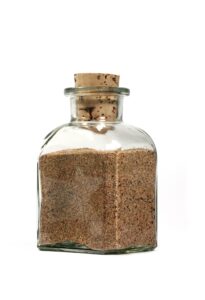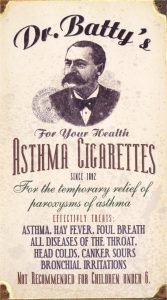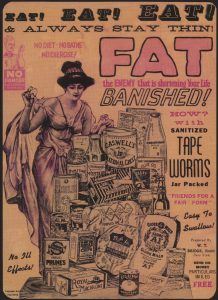 A MORE VALUABLE DISCOVERY was never
A MORE VALUABLE DISCOVERY was never
made in Medicine than NELSON’S MIXTURE for DIS-
EASES of the LUNGS.—Coughs the most inveterate, sleepless
nights, wheezing, and shortness of breath, profuse spitting, pains
in the chest, and spitting of blood, in short asthma and consumption
is completely cured by it; it lessens excessive perspirations and
amends the expectoration, changing the secretion from purulent
matter to healthy phlegm, and while it heals and strengthens the
lungs it invigorates the tone of the stomach and recovers the body
from a state of debility and emaciation. For recent coughs, colds,
catarrhs &c. it is seldom wanted more than two or three days.
Having for the last 22 years observed the sad inefficacy of every
mode of treatment adopted by the most eminent physicians, J.
NELSON was induced to venture on a practice new and peculiar to
himself, and from which he has experienced such unparalleled success,
that he can with confidence declare, if the patient does not find
speedy and effectual relief from this medicine, all that the Royal Col-
lege of Physicians can do will be of no avail; having now declined
practice, this medicine is offered to the public under the form of a
mixture. Sold by J. Brooks, 421, Oxford-street, and J. Leathwait,
South entrance, Royal Exchange.
Source: The Times, 8 August 1817
.
It is a truth universally acknowledged than anyone writing anything to do with Jane Austen must oh-so-wittily begin their article with ‘It is a truth universally acknowledged…’ Thus yesterday The Times reported that Austen might have died of tuberculosis rather than the Addison’s Disease previously suspected.
The above advert was placed in that same newspaper in the months before and after Austen’s death, and its comments about the medical profession are barbed enough to have perhaps occasioned her a sly smile. Less amusing, however, were the actual symptoms of pulmonary tuberculosis, or phthisis as it was known:
In the last stage of phthisis, the emaciation is so great that the patient has the appearance of a walking skeleton ; his countenance is altered, his cheek-bones are prominent, his eyes look hollow and languid, his hair falls off, his nails are of a livid colour and much incurvated, and his feet and ancles are affected with oedematous swellings. To the end of the disease the senses remain entire, and the mind is confident and full of hope.
The Modern Practice of Physic, Robert Thomas, 1828
The early 19th-century consumptive patient didn’t have the option of the later sanatoria, where fresh air was the order of the day. Instead, doctors advised the ‘close room’ regime, with as little exposure to the elements as possible – or, for those who could afford it, travel to a warmer climate. When, in 1840, country doctor George Bodington suggested a fresh air cure, his ideas met with derision from the faculty (partly, no doubt, because he had a real go at eminent physician Sir James Clark for not coming up with any ideas of his own.)
In spite of the romantic image of consumption, the majority of sufferers were poor and unable to swan off to the Mediterranean. In Bishopsgate, London, an Infirmary for Asthma, Consumption, and other Diseases of the Lungs offered treatment to those who could not afford doctors. The wards were kept at a ‘moderate summer temperature’ all year round, but most people were treated as outpatients, and presumably had to return to their own chilly lodgings after consultation.
Other prominent treatments included blood-letting, cupping and blistering. Digitalis was popular but controversial, and tartar emetic in regular use. In 1829, James Murray wrote on the value of inhalations of iodine, but it took a couple of decades for this to catch on.
There were various theories as to the cause of consumption – the patient’s lifestyle, constitution and even looks being considered strong factors, but in 1822, Richard Reece’s Monthly Gazette of Health referred rather dismissively – and intriguingly – to an anonymous practitioner’s discovery:
A person, residing at Bath, asserts in his public advertisements, that, on microscopical examination of the matter brought up from the lungs of consumptive subjects, he has discovered animalculae of the shape of a maggot, to the irritation of which he attributes cough and the progress of the organic affection! By destroying these mischievous animals, by means of inhaling a particular gas, he says he has succeeded in restoring patients to health, whose cases were declared to be hopeless.
Although Reece (who, incidentally, was the doctor caught up in the case of Joanna Southcott’s supposedly miraculous pregnancy in 1814) exaggerates, making the microscopist sound like someone touting a remedy for financial gain, I believe he is referring to one Mr Rogers. Earlier in 1822, Rogers made a discovery that the London Medical and Physical Journal thought ‘may ultimately prove of some importance.’ The Journal reported Rogers as saying:
I have observed that the matter, or pus, expectorated in a certain stage of pulmonary consumption, is actually filled with multitudes of minute worms; the forms of which, in their evolutions from the surrounding mucus, are so distinctly seen, as to obviate all doubt of their identity with living animalculi.
The description bears more than a passing resemblance to what is now called Mycobacterium tuberculosis, officially discovered by Robert Koch 60 years later:
‘Is it unreasonable,’ Rogers suggested before he faded into obscurity, ‘to regard these worms, the existence of which is indisputable, as forming the concomitant cause of consumption?’




Nice post!
Another fascinating post. Thanks very much.
The picture you show of Mycobacterium tuberculosis is from an electron microscope, and is very different from what you would see with a light microscope.
It takes quite a lot of technique and training to prepare a specimen so that you can see what you are looking for under a microscope. Some bacteria can be seen without special stains, but you have to use special stains to distinguish different kinds from one another. The people who discovered useful stains have had the stains named after them: they were very important discoveries.
A specimen of sputum will have many different species of bacteria swimming around in it, so even if you have the right stain, you still have a problem proving that the bacterium you have found is the cause of the disease.
I suspect that Rogers would have used no stains, or ineffective stains. The stains used most often today are the Gram stain, which allows you to see the bacteria that cause most common infections, and the Ziehl-Neelsen stain that allows you to see Mycobacterium tuberculosis.
There is a nice picture of MTB here:
http://health.state.tn.us/images/TB_Smear.jpg
The Gram stains and the Ziehl-Neelsen stains were developed in the early 1880-s (according to Wikipedia) well after Rogers’ report.
Robery Koch is famous for proving that Mycobacterium tuberculosis causes TB — TB is called Koch’s disease by doctors who want their patient to not understand what they are talking about.
Robert Koch is famous for his postulates that “must” be satisfied if you want to be certain that a micro-organism causes a disease. It must:
(1) be found in all cases of the disease examined
(2) be able to be prepared and maintained in a pure culture
(3) be capable of producing the original infection, even after several generations in culture
(4) be retrievable from an inoculated animal and cultured again
Sorry – just seen a typo in:
“It takes quite a lot of technique and training to prepare a specimen so that you can see what you are looking for under a microscope.”
This should be:
“It takes quite a lot of technique and training to prepare a specimen so that you can see what you are looking for under a *light* microscope.”